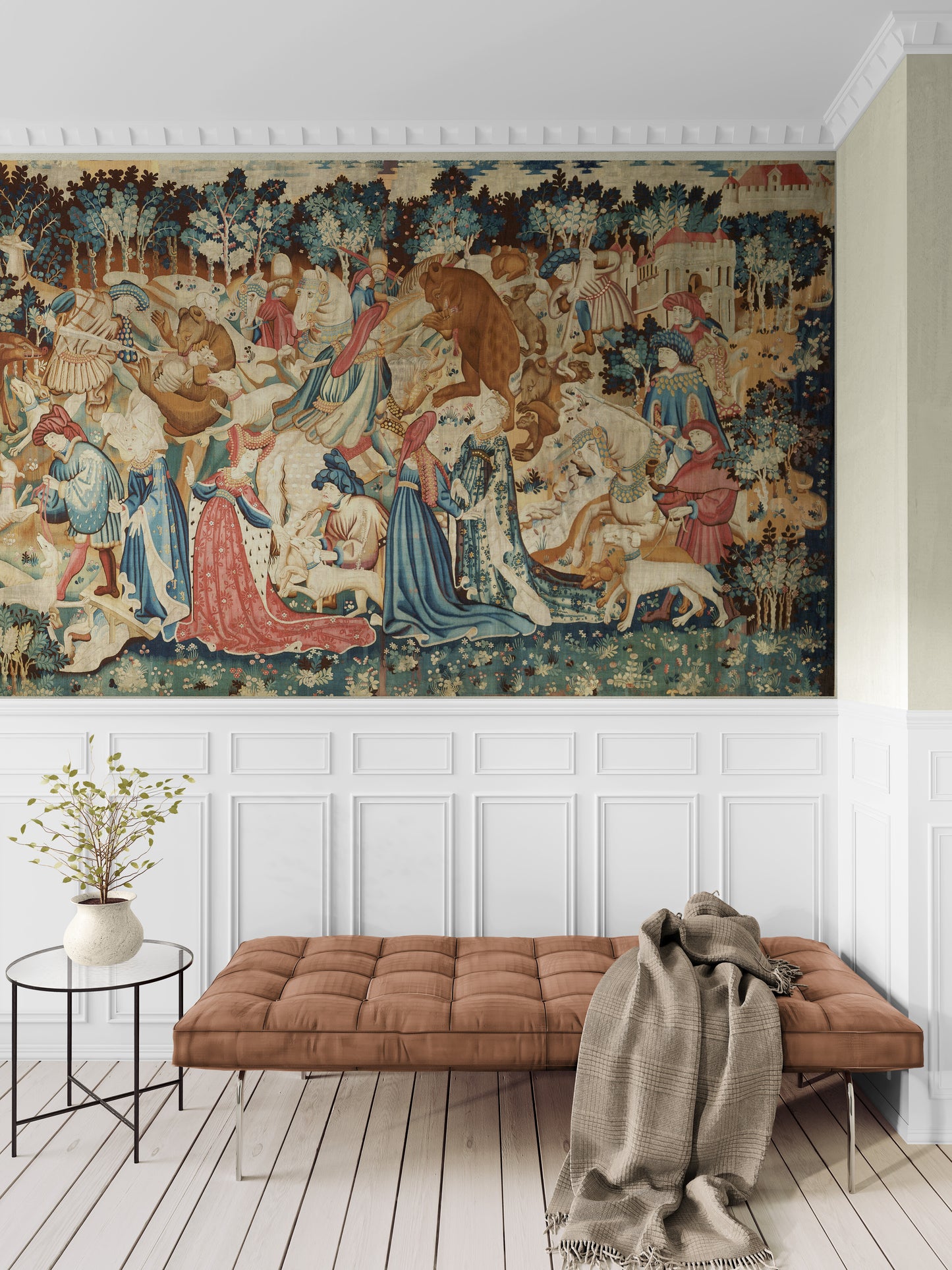Romantic English
Huge The Boar and Bear Hunt tapestry Reproduction Woven and Fabric Print Option Super Conversational RE978886
Huge The Boar and Bear Hunt tapestry Reproduction Woven and Fabric Print Option Super Conversational RE978886
Couldn't load pickup availability
Huge The Boar and Bear Hunt tapestry Reproduction Woven and Fabric Print Option Super Conversational RE978886
The Devonshire Hunting Tapestries are four very large and beautifully designed tapestries made between 1430 – 1450, depicting hunting scenes of boars, bears, swans, otters, deer and falconry. Very few tapestries of this scale and quality of design have survived.
Get your very own fabric reproduction! 150cm x 488cm SUPER LONG and magnificent!
The original tapestries were probably made in Arras, in modern day France – a centre famed for supplying the courts of France and Burgundy with magnificent wall hangings.
They were acquired by the museum in 1957 from the estate of The Dukes of Devonshire, and probably belonged to the Countess of Shrewsbury, known as 'Bess of Hardwick', a celebrated, four-times married noblewoman who had the grand Derbyshire house Hardwick Hall built in the 1590s. The tapestries were hanging at Hardwick in the 19th century.
Tapestries were expensive and much-prized during the medieval and Renaissance periods. They were easy to transport and well-suited to the travelling lifestyle of the northern courts up to the 17th century, providing means for insulating and decorating the coldest and gloomiest castle. Tapestries would have hung from floor to ceiling and been placed edge to edge, like wallpaper in a modern room. Those with narratives also provided entertainment and interest for the household and guests at a time of low literacy, when images were extremely important.
The hunt was a particularly powerful theme and would have been a familiar pastime as well as an important source of food to many of the high-born individuals and families who owned tapestries. Henry VIII was known to have owned over 200 tapestries illustrating hawking and hunting scenes.
This tapestry features a number of elegant couples. In the centre of the tapestry a lady wears a sumptuous blue gown decorated with back-to-front letters that spell the motto 'much desire'. The man's sleeve is decorated with silver shapes that resemble teardrops and probably also relate to the pursuit of love.
The rich red gown of the lady further right is lined with miniver, an expensive fur obtained from the bellies of Baltic squirrels. A lining on this scale would have required hundreds of skins, taken from squirrels killed during the winter months.
RE978886
Share






























